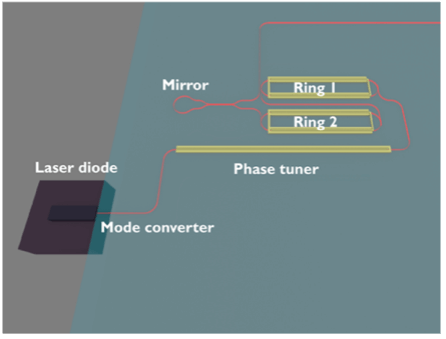Summary
Developing a new type of Fabry-Pérot cavity that allows improved control of the atoms’ emission into the cavity mode will result in enhancement of the efficiency and fidelity of quantum state transfer from photons to atoms and back. This in turn can be used to improve the performance of quantum networks and repeaters, as well as sensors based on atoms inside Fabry-Pérot cavities. In this project we design and fabricate Fabry-Pérot microcavities that trap only one polarization of light. A Fabry-Pérot cavity is an optical resonator formed by two parallel mirrors or reflective surfaces. When the frequency of light matches the spacing between the mirrors, photons can enter through the mirrors and become trapped inside the cavity, which can then be used to enhance their interactions with the medium between the mirrors. Alternatively, when an atom in an excited state is placed inside the cavity, the cavity will encourage the atom to emit light that matches the cavity, which is one of the phenomena on which laser is based. In our work, the microcavity consists of two metasurfaces that act as chiral polarization-selective (dichroic) mirrors and that tightly confine one type of circularly polarized optical field in the free space between them, while remaining transparent to light of the opposite circular polarization. We propose to realize free space Fabry-Pérot cavities by fabricating reflective and focusing metasurfaces on the tips of optical fibres. Finally, this project has the potential to improve the performance and scalability of quantum information platforms that rely on cavity quantum electrodynamics, and possibly trapped ions as well, by realizing optical cavities with smaller mode volumes, compact footprint, and chirality-enhanced light-atom coupling.
Related Content

Molecular Scale Magnetic Resonance Imaging
Through its phenomenal ability to image soft tissues, magnetic resonance imaging (MRI) has revolutionized both clinical medicine and research biomedicine.
September 9, 2016

Visible wavelength external cavity diode lasers in photonic integrated circuits for atomic technologies
Atoms can be controlled by manipulating their internal states using agile, quiet and reliable laser sources. An external-cavity diode laser (ECDL) is a crucial enabling technology to realize such laser sources since it allows for the narrowing of the linewidth of a laser diode and precise tuning of the laser frequency. This project aims to […]
April 19, 2023

Quantum Light Sources Based on Deterministic Photon Subtraction
Summary This project develops new sources of light that utilize quantum entanglement to enhance imaging resolution and detection. We aim to go beyond simple photon pairs and advance our understanding and control of new quantum states of light. Our approach uses deterministic single-photon subtraction (removing of a specific photon from a pulse of light) […]
July 13, 2018

Scanning Tunneling Microscopy of Quantum Materials, Devices and Molecules
Summary This project advances our ability to characterize and study novel quantum materials, quantum devices, and even individual molecules at the atomic level. By combining Non-Contact Atomic Force Microscopy (NC-AFM), Scanning Tunneling Microscopy (STM) and scanning gate methods, we correlate spatial information with transport properties and can locally manipulate charge, spin and structural states. […]
January 28, 2019


